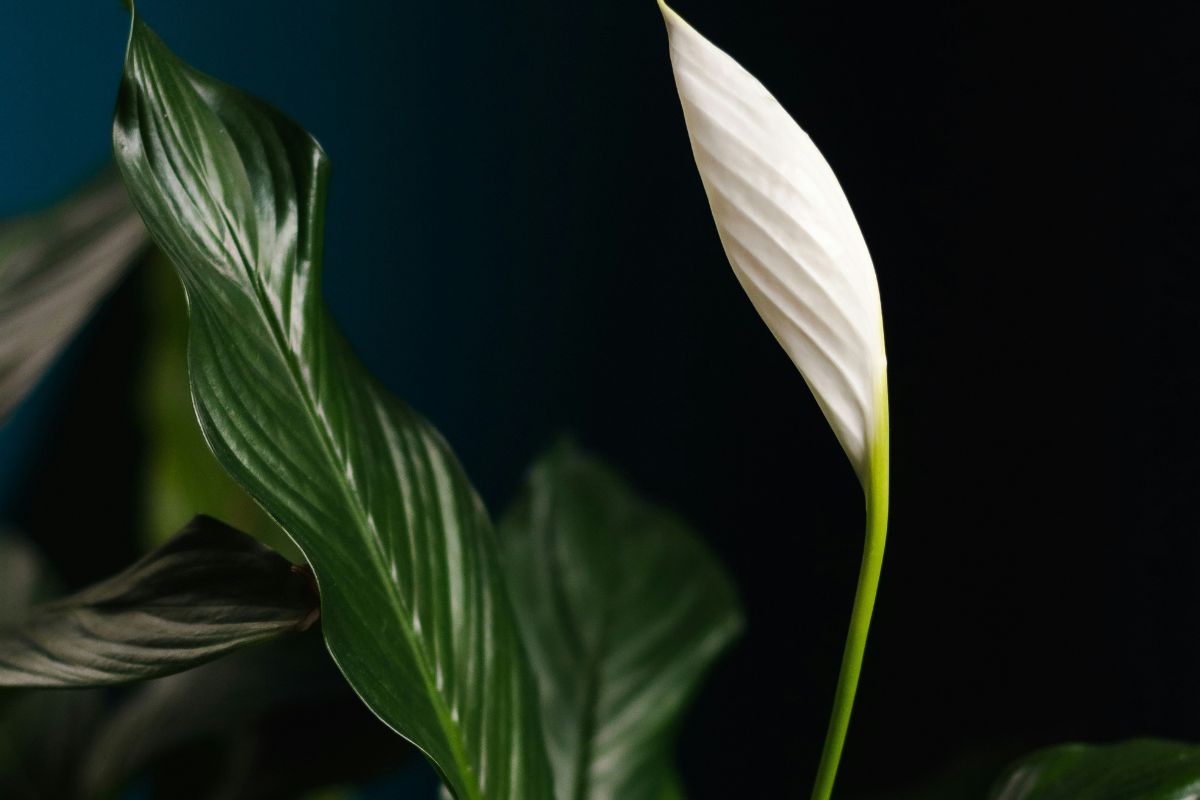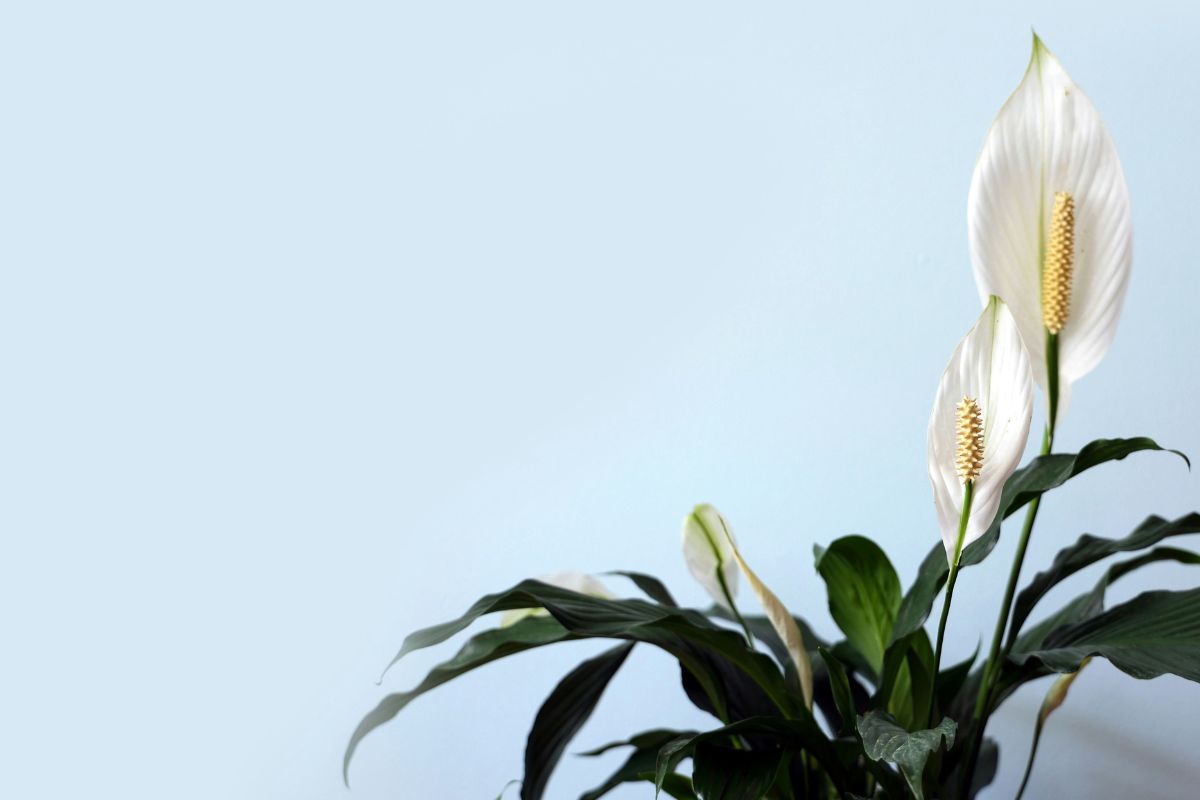Peace Lily Benefits and Care Guide
Peace Lily (Spathiphyllum), a beloved houseplant, is admired for its graceful white blooms and vibrant green leaves. Its ease of care and ability to thrive in indoor conditions make it a favorite among plant enthusiasts. This guide delves into the benefits of Peace Lily and provides step-by-step instructions for its care.
Benefits of Peace Lily

Air Purification
Peace Lily is renowned for its air-purifying properties. It effectively removes common indoor pollutants like benzene, formaldehyde, and carbon monoxide, contributing to a healthier environment.
How It Works:
Absorbs toxins through its leaves and roots.
Releases oxygen, improving indoor air quality.
Tip: Place Peace Lily in bedrooms or living areas to enjoy its air-cleaning benefits.
2. Low-Maintenance Beauty
Peace Lily is an excellent choice for beginners due to its minimal care requirements. It can adapt to a range of lighting and watering conditions, making it one of the most forgiving houseplants.
Why It’s Easy:
Thrives in low to medium light.
Indicates when it needs water by drooping slightly.
3. Boosts Humidity Levels
Peace Lily naturally increases humidity through transpiration, which can alleviate dry air issues in indoor spaces.
Benefits of Higher Humidity:
Reduces dry skin and respiratory discomfort.
Benefits other humidity-loving plants nearby.
4. Elegant Decor Element
The Peace Lily’s glossy green leaves and striking white flowers add a touch of sophistication to any room. Its compact size makes it perfect for desks, shelves, and tabletops.
Decor Tips:
Use decorative pots to complement its aesthetic appeal.
Group it with other plants for a lush, tropical vibe.
5. Symbol of Peace and Positivity
The Peace Lily is often gifted as a symbol of harmony and renewal. Its graceful blooms are associated with calming energy and positivity.
Cultural Significance:
Commonly used in ceremonies and as a symbol of goodwill.
Believed to bring peace to homes and workplaces.

How to Care for Peace Lily
Peace Lily is an easy-care plant, but understanding its needs ensures it remains healthy and vibrant.
1. Light Requirements
Peace Lily thrives in low to medium indirect light. Direct sunlight can scorch its leaves, while insufficient light may reduce flowering.
Tips:
Place near a north- or east-facing window.
Turn the plant occasionally to promote balanced growth.
2. Watering
Peace Lily prefers consistently moist soil but does not tolerate overwatering. Its leaves droop when it’s thirsty, serving as a natural reminder to water.
Tips:
Water the plant when the top inch of soil feels dry.
Use room-temperature water to prevent root shock.
Make sure the pot has drainage holes to avoid waterlogging.
3. Soil
Peace Lily thrives in well-draining, nutrient-rich soil. A standard potting mix works well, but you can improve aeration by adding perlite or orchid bark.
Recommendation:
Use a high-quality indoor plant soil mix.
Re-pot every 1-2 years to refresh the soil and provide room for growth.
4. Temperature and Humidity
Peace Lily prefers warm, humid conditions. It grows best in temperatures ranging from 65-85°F (18-29°C).
Tips:
Avoid placing it near drafts, air conditioners, or heaters.
Increase humidity with a pebble tray or by misting the leaves.
5. Fertilizing
Feed Peace Lily monthly during the growing season (spring and summer) to promote healthy growth and flowering.
Tips:
Apply a balanced liquid fertilizer diluted to half strength.
Avoid over-fertilizing, which can cause brown leaf tips.
6. Pruning and Propagation
Prune regularly to maintain the plant's shape and encourage new growth. Peace Lily can also be propagated by dividing its root clumps.
Pruning Tips:
Remove yellow or brown leaves to keep the plant tidy.
Cut spent flowers at the base of the stalk.
Propagation Steps:
Carefully remove the plant from its pot.
Divide the root ball into sections, ensuring each has healthy roots and leaves.
Replant the divisions in fresh soil.
Common Problems and Solutions
Yellow Leaves: Overwatering or underwatering. Modify the watering schedule and monitor the soil’s moisture level.
Brown Leaf Tips: Low humidity or excessive fertilizer. Increase humidity and reduce feeding frequency.
Lack of Flowers: Insufficient light or nutrients. Move the plant to a brighter spot and fertilize during the growing season.
Pest Infestations: Watch for spider mites or mealybugs. Apply insecticidal soap or neem oil as required.
Conclusion
The Peace Lily is more than just a beautiful plant; it’s a natural air purifier, a humidity booster, and a symbol of peace. With its low-maintenance nature and numerous benefits, it’s an excellent addition to any indoor space. Proper care ensures this graceful plant thrives and brings tranquility to your home or office for years to come.

